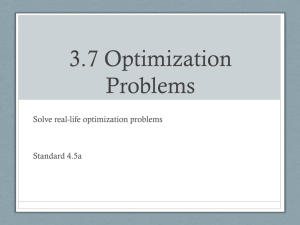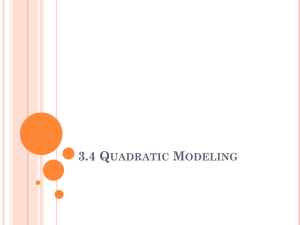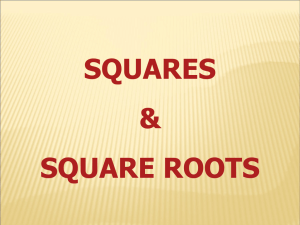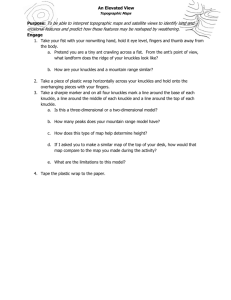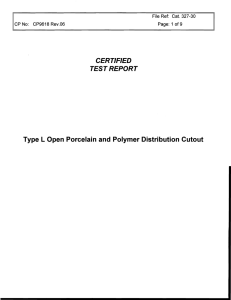Middle School
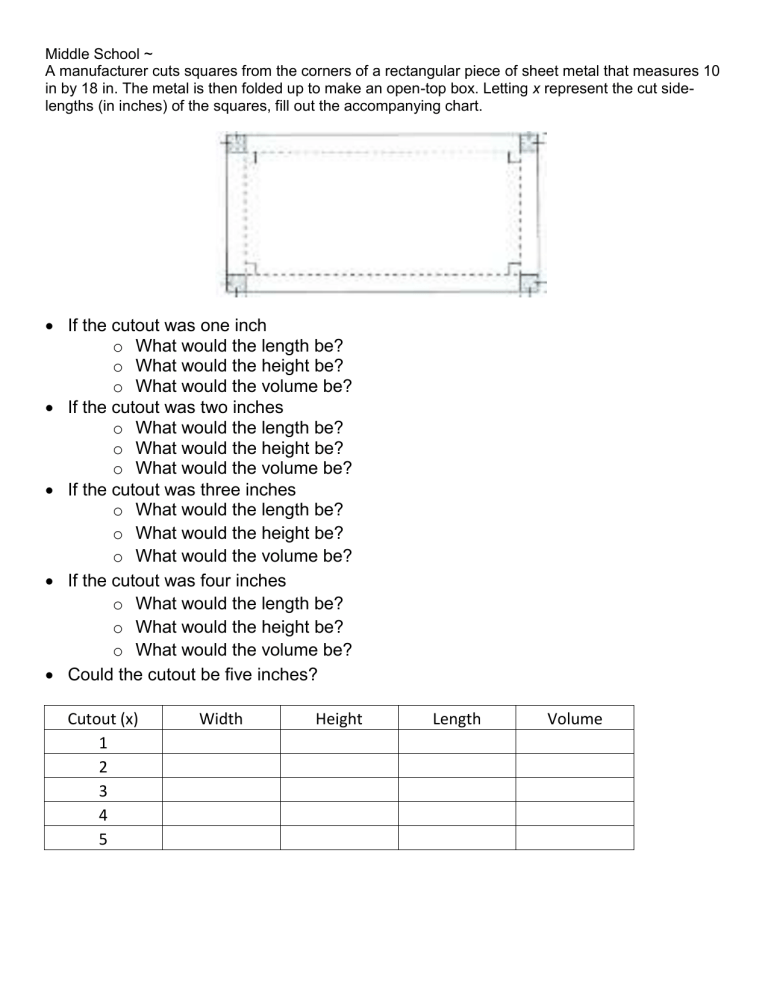
Middle School ~
A manufacturer cuts squares from the corners of a rectangular piece of sheet metal that measures 10 in by 18 in. The metal is then folded up to make an open-top box. Letting x represent the cut sidelengths (in inches) of the squares, fill out the accompanying chart.
If the cutout was one inch o What would the length be? o What would the height be? o What would the volume be?
If the cutout was two inches o What would the length be? o What would the height be? o What would the volume be?
If the cutout was three inches o What would the length be? o What would the height be? o What would the volume be?
If the cutout was four inches o What would the length be? o What would the height be? o What would the volume be?
Could the cutout be five inches?
Cutout (x)
1
2
3
4
5
Width Height Length Volume
Algebra ~
A manufacturer cuts squares from the corners of a rectangular piece of sheet metal that measures 10 in by 18 in. The metal is then folded up to make an open-top box. Letting x represent the cut sidelengths (in inches) of the squares, fill out the chart below. Find the volume given each cutout length.
Cutout (x)
1
Width Height Length Volume
4
5
2
3 x
A. If a company needs a box with the highest possible volume what should your cutout dimension be?
B. Use the equation that you derived to find the volume when the cutout length is
2.5”
C. Would a cutout length of 5” be an option? Why/Why not? Explain.
Geometry ~
A manufacturer cuts squares from the corners of a rectangular piece of sheet metal that measures 10 in by 18 in. The metal is then folded up to make an open-top box. Letting x represent the cut side-lengths (in inches) of the squares, fill in the chart below:
Cutout (x) Volume Lateral Area Surface Area
1
2
3
4
Do you see a relationship between the value of x , the volume and the surface area?
Explain.
Algebra II/Trig ~
A manufacturer cuts squares from the corners of a rectangular piece of sheet metal that measures 10 in by 18 in. The metal is then folded up to make an open-top box. Letting x represent the cut side-lengths (in inches) of the squares. a. Find the equation that would represent that function. b. Write the domain and range in both set and interval notation. c. Given the cubic regression found in part a find the maximum value of x that would give you largest volume. d. If the manufacturer needed a volume of at least 128 cubic inches what would the cutout dimension need to be?
